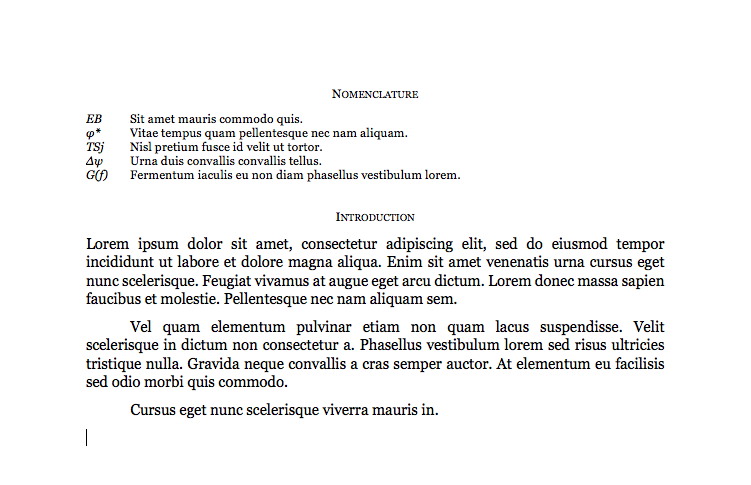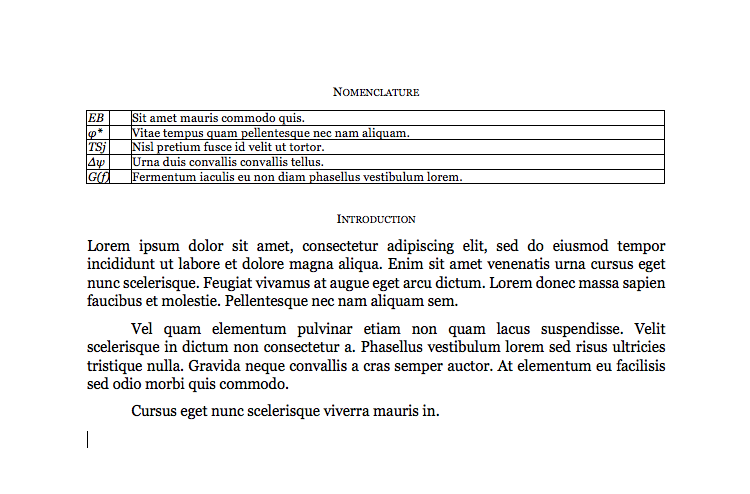IEEE General Format

Welcome to the Purdue OWL
This page is brought to you by the OWL at Purdue University. When printing this page, you must include the entire legal notice.
Copyright ©1995-2018 by The Writing Lab & The OWL at Purdue and Purdue University. All rights reserved. This material may not be published, reproduced, broadcast, rewritten, or redistributed without permission. Use of this site constitutes acceptance of our terms and conditions of fair use.
Contained in this page are some basic guidelines for formatting a paper in IEEE style. The best way to format your paper may vary slightly depending on which field you’re working in and the specifics of where your paper is being submitted, so remember to double-check against any submission guidelines provided by the organization, instructor, or supervisor to whom you are submitting your paper.
Guidelines
- The paper title should be centered at the top of the first page, in 24-point type.
- The byline should be centered below the title, after a line break, in 10-point type. It should contain the following, on separate lines:
- Author’s name (or authors’ names)
- Author affiliation(s)
- City & country location(s)
- E-mail address(es).
- The body of the paper should be in 10-point type, and formatted to appear in two columns. The columns on the last page should be the same length; this may require adding a column break after you have finished the body of your paper.
- All papers must begin with an abstract and index terms.
- Papers may, depending on context and field, include some or all of the following:
- Note to Practitioners
- Nomenclature
- Appendices
- Acknowledgements
- Papers may be divided into sections and subsections; IEEE has guidelines for primary, secondary, tertiary, and quaternary section headings.
- IEEE papers begin with a drop cap two lines deep, followed by the next 8-12 characters (or 1-2 words, whichever is appropriate) in all caps.
- Figures, tables, and equations should each be numbered consecutively, but separately. They should also be centered in the column in which they appear.
Abstracts
An IEEE abstract should be written as a single paragraph roughly 200 words long, give or take 50 words. (Abstracts shorter than 150 words or longer than 250 risk incurring the irritation of the editors.) It should be self-contained, and should concisely & accurately summarise the contents of your paper. It is encouraged to try and include three or four keywords or key phrases to help interested readers to find your article.
Abstracts should be simply formatted, without anything that requires specialized typesetting or consultation of material outside the abstract. Abbreviations, footnotes, references, tables, graphs, charts, figures, and displayed mathematical equations are specifically forbidden. The goal of an abstract is to be a simple, accessible, and self-contained microcosm of your paper.
Here is an example of how you might format an abstract:
The abstract should be followed by index terms. These should be in a paragraph separate from the abstract. Index terms are similar to keywords and are provided by the paper’s author to help journals, editors, and readers categorize, archive, or locate your paper. IEEE maintains a standardized list of index terms to make this process easier and its categories more consistent. The most recent version of the IEEE Taxonomy can be found on the IEEE website. Here is a link to the 2019 version of the taxonomy.
Index terms should be given in alphabetical order; the first should be capitalized, and the rest lowercase unless they contain acronyms or other components that inherently require capitalization.
Here is an example of how you might format a set of index terms:
Section Headings
Dividing one’s paper into clearly labelled sections increases readability, and is encouraged. Typical sections include Introduction and Conclusion sections as well as sections within the body of the paper that relate to aspects of its content.
Primary headings are enumerated with Roman numerals followed by a period, set in small caps, and centered above the text.
Secondary headings are enumerated with capital letters followed by a period, set in italics and title case, left-aligned, unindented, and separated from the text by a line break.
Tertiary headings are enumerated by Arabic numerals followed by a close-parenthesis, set in italics and title case, left-aligned, indented one em, and separated from the text by a colon. There is no line break between the heading and the text.
Quaternary headings are enumerated by lowercase letters followed by a close-parenthesis, set in italics and sentence case, left-aligned, indented two ems, and separated from the text by a colon. There is also no line break here.
Here is an example of what the various headings should look like in your document:
I. Primary Heading
Lorem ipsum dolor sit amet, consectetur adipiscing elit, sed do eiusmod tempor incididunt ut labore et dolore magna aliqua. Fermentum leo vel orci porta non pulvinar neque laoreet suspendisse.
A. Secondary Heading
Odio ut enim blandit volutpat maecenas volutpat blandit aliquam. Amet consectetur adipiscing elit pellentesque habitant morbi tristique senectus et.
1) Tertiary Heading: Libero justo laoreet sit amet cursus sit. Enim nec dui nunc mattis enim ut tellus elementum sagittis.
a) Quaternary heading: Nibh ipsum consequat nisl vel pretium lectus. Malesuada proin libero nunc consequat interdum varius.
Special Headings
In addition to the standard headings above, there are a few special cases. References and Acknowledgments are formatted like primary headings, but are not enumerated.
Appendix headings should be arranged under a separate system, though formatted like primary headings; if there is only one appendix, it requires neither a number nor a name, but is simply labelled Appendix. If there are multiple appendices, they should be numbered and titled, though one should note that the numbering system for appendix headings is wholly separate from that of section headings; they start at one, regardless of how many sections were present within the paper. Appendices may be enumerated either with Roman numerals or with capital letters, according to the preference of the author, as long as it is done with consistency. Unlike section headings, the number will come after the word “Appendix”: Appendix A rather than A. Appendix. They should have titles, set on the line below them but still formatted like a section heading.
Here is an example of how you might format the beginning of an appendix:
Appendix B
Regarding the Vermiform Process
Lorem ipsum dolor sit amet, consectetur adipiscing elit, sed do eiusmod tempor incididunt ut labore et dolore magna aliqua. At augue eget arcu dictum varius.
If at any point you wish to refer back to a previous section within the text of your paper – e.g. “As mentioned in [section]…” – you should capitalize the word “Section” and separate subsections from the primary section numeral with a hyphen. E.g., “Section IV,” “Section II-A,” “Section III-B4c,” etc.
Note to Practitioners
The Note to Practitioners, if you choose to include one, goes below your abstract. The aim of the Note is to, without repeating any of the information from your abstract, explain the practical applications of your work without use of jargon. This is so that engineers working on practical problems, who may not have significant background in your particular field, will be able to understand the application of your work to theirs.
A Note to Practitioners can be more than one paragraph, but is otherwise formatted like the abstract.
Here is an example of what a Note to Practitioners might look like:
Note to Practitioners – Lorem ipsum dolor sit amet, consectetur adipiscing elit, sed do eiusmod tempor incididunt ut labore et dolore magna aliqua. Enim sit amet venenatis urna cursus eget nunc scelerisque. Feugiat vivamus at augue eget arcu dictum. Lorem donec massa sapien faucibus et molestie. Pellentesque nec nam aliquam sem.
Vel quam elementum pulvinar etiam non quam lacus suspendisse. Velit scelerisque in dictum non consectetur a. Phasellus vestibulum lorem sed risus ultricies tristique nulla. Gravida neque convallis a cras semper auctor. At elementum eu facilisis sed odio morbi quis commodo.
Cursus eget nunc scelerisque viverra mauris in. Fames ac turpis egestas integer eget. Viverra mauris in aliquam sem fringilla ut morbi.
Nomenclature
If your paper uses a number of different symbols, variables, and so forth, you may want to avoid having to define them within the body of your paper by providing a list of definitions up front; this is called the Nomenclature section. If you choose to include a Nomenclature section, it goes immediately before the Introduction section.
The heading for the Nomenclature section is formatted like a primary heading with no numeral, and the section itself is formatted generally the same as body text, including the italicization of variables. The main difference is the way in which the text must be aligned: the terms being defined are flush against the left margin, and the definitions are aligned one em-space after the longest defined term.
If you are working in a word processor, the easiest way to do this is often to insert a table into your document with invisible borders below the Nomenclature heading. See the images below for an example. Note that the images have been zoomed in to enlarge the text for clarity purposes.

Example of a nomenclature section

Example of a nomenclature section with the borders of the table used to format the section set to visible